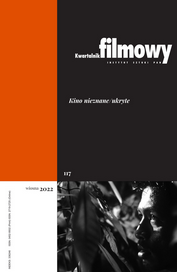Wielokulturowość w filmach NRD? Próba opisania zjawiska, którego mogło nie być
Multiculturalism in GDR Films? An Attempt to Describe a Phenomenon That Might Not Have Existed
Author(s): Andrzej GwóźdźSubject(s): Cultural history, Nationalism Studies, Sociology of Culture, Film / Cinema / Cinematography, Politics of History/Memory, History of Art
Published by: Instytut Sztuki Polskiej Akademii Nauk
Keywords: cultural memory; political emigration; GDR; culture-centrism; nationalism; propaganda; image placement; ethnic minorities; national minorities;
Summary/Abstract: Based on films produced in the East German company Defa, the author presents a hypothesis of regulated multiculturalism of the GDR cinema. He indicates multicultural discourses in historical films about distant and more recent history: the multicultural borderland of West Prussia in the late 19th century (Levins Mühle, dir. Horst Seemann, 1980) and the confrontation of Prussian and Uruguayan culture at the turn of the 18th and 19th centuries (Die Besteigung des Chimborazo, dir. Rainer Simon, 1989). Then he deals with issues concerning the meeting of East German and Polish cultures (Die Schlüssel, dir. Egon Günther, 1972/1974; Über sieben Brücken mußt du gehn, dir. Hans Werner, 1978). The author also discusses the propagandist use of the images of Angela Davis and Dean Read in two films related to the 10th World Festival of Youth and Students in Berlin in August 1973. However, the main emphasis is put on films thematizing political emigration from South America (Ein April hat 30 Tage, dir. Gunther Scholz, 1979; Isabel auf der Treppe, dir. Hannelore Unterberg, 1984; Blonder Tango, Lothar Warneke, 1986).
Journal: Kwartalnik Filmowy
- Issue Year: 2022
- Issue No: 117
- Page Range: 26-48
- Page Count: 23
- Language: Polish

